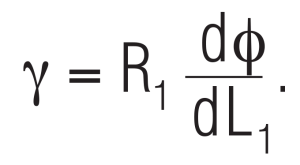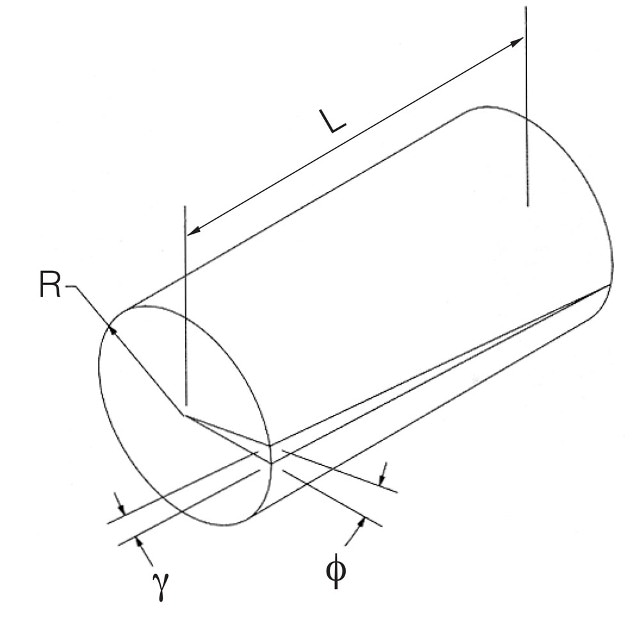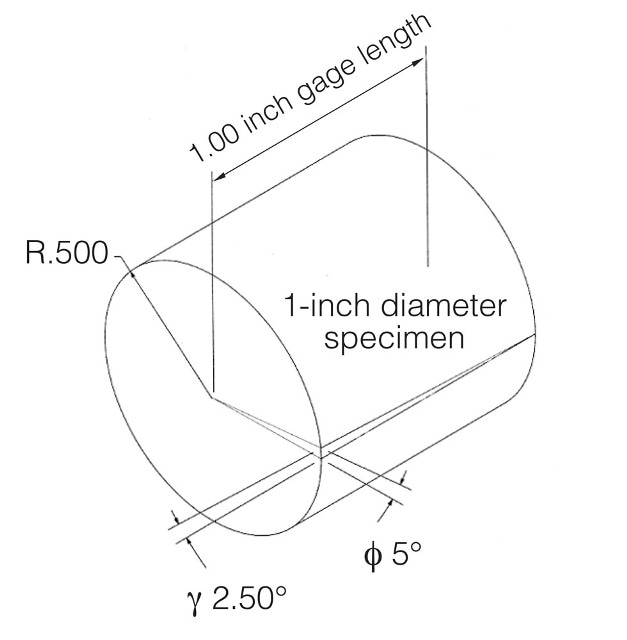The 3550 Axial/Torsional Extensometers from Epsilon are designed to simultaneously measure axial and torsional deflections on samples tested in axial/torsional machines.
The company provides 36 Extensometer models, which are offered in thousands of variations. The company’s focus of helping customers has led to the development of models to cover almost any test method.
Operation of these and all of Epsilon’s extensometer are verified to applicable standards such as ISO 9513 or ASTM E83 using in-house calibration systems. These systems are calibrated with Epsilon’s laser interferometer system.
The company has 20+ years history of service for the materials testing community, and will be there to stand behind their products when the user’s critical application requires it.
The Model 3550 extensometer is often used on round specimens tested in bi-axial test machines capable of concurrent torsional and axial loading. The extensometer is often customized for specific applications. All of the units are capable of bi-directional displacement, so they can be utilized for cyclic testing under fully reversed loading conditions.
The standard sized model is self-supporting on the sample, and works on specimens from 9.5 to 25.4 mm (0.375 to 1.000”) diameter. The conical point contacts included with the extensometer are composed of tungsten carbide. Their unique design directly measures the surface shear strain angle, which allows operation on a broad range of specimen diameters without altering calibration.
All of the models are engineered specifically to reduce crosstalk between axes and to offer high accuracy measurements. They feature the dual flexure design, which is common to other Epsilon extensometers.
The options provided cover temperature ranges from -265 °C to 200 °C (the standard temperature range is -40 °C to 100 °C). Both metric and inch versions are available. A broad range of gauge length and measuring ranges are available. As the transducers are frequently used for specialized tests, customer’s specific test needs can be met by the company.
The Model 3550 extensometers are strain gaged devices, making them compatible with all electronics designed for strain gaged transducers. Most frequently they are connected to a test machine controller. The signal conditioning electronics for the extensometer is usually included with the test machine controller or may often be added.
In this case, the extensometer is delivered with the correct connector and wiring to plug directly into the electronics. Epsilon can offer a number of solutions if systems lack the required electronics, enabling the extensometer output to be connected to chart recorders, data acquisition boards, or other equipment.
The Epsilon axial/torsional extensometer was engineered to directly measure the shear strain, γ, as illustrated in the figure. This design allows the correct determination of the shear strain without needing to know the radius of the specimen being tested, R1. The shear strain is related to the angle of twist (a frequently referenced parameter in torsion testing), φ, by the following relationship:

For extensometers that measure φ directly rather than γ, corrections have to be made for every different specimen diameter tested and for axial strain to correctly determine shear strain.
The following two examples illustrate the variation of the angle of twist versus a change in specimen diameter relative to the constant resulting shear strain:



Features
The key features of the 3550 Axial/Torsional Extensometers are as follows:
- Full bridge, 350 ohm strain gaged design for compatibility with almost any test system
- Self-supporting on the sample
- Standard units meet ASTM class B-1 requirements for accuracy. A test certificate is included. ISO 9513 class 0,5 test certificates are available upon request. All standard units have linearity readings of 0.20% or better in torsion.
- Rugged, dual flexure design for strength and better performance - much stronger than single flexure designs
- Cyclic testing can be performed at up to 2 Hz
- High quality foam lined case is provided
Specifications
The main specifications of the 3550 Axial/Torsional Extensometers are as follows:
- Excitation: 5 to 10 VDC recommended, 12 VDC or VAC max.
- Operating force: <30 g typical
- Output: 2 to 4 mV/V, nominal, depending on model
- Temperature range: Standard (-ST) is -40 °C to +100 °C (-40 °F to 210 °F)
- Linearity: ≤0.15% of full scale measuring range, depending on model
- Cable: Integral, ultra-flexible cable, 2.5 m (8 ft) standard
- Crosstalk: Less than 0.5%
Options
The following are the options available with the 3550 Axial/Torsional Extensometers are as follows:
- Connectors to interface to nearly any brand test equipment
- Shunt calibration
- Model 3590AT axial/torsional calibrator
Measuring Axial and Torsional deflections with the 3550 Axial/Torsional Extensometers

Extensometer_for_bi-axial_tension-torsion_strain_measurement-Model_3550

Axial-torsional_extensometer_for_static_and_fatigue_strain_measurement-Model_3550

Axial-torsional_extensometer_for_bi-axial_strain_measurement-Model_3550